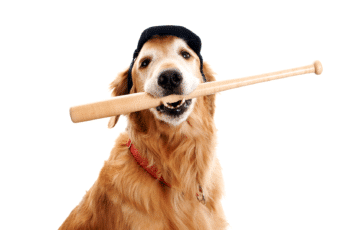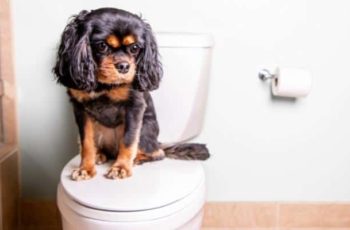The worst aspect of potty training is definitely cleaning up the poop. Not only is it hard to pick up, but it also smells, it stains, and it’s overall just disgusting!
I would dread having to walk around the house & finding a little “treat” that my pup left for me!
That’s why it’s a fantastic idea to train your dog to poop in one spot. This can be pretty challenging, though, and requires a ton of patience.
However, with a few of these tips, you can potty train your pup in no time!
Tips to Get Your Dog to Poop in the Potty Spot
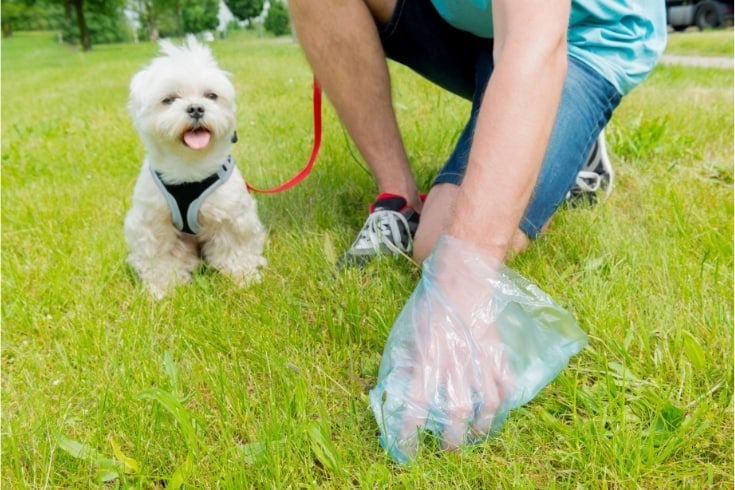
Here are some helpful tips to get your dog to poop in his special pooping spot.
Choose the correct spot for your pooch
- The poop spot that you choose can be indoors or outdoors. While it’s better to have it outdoors, if you have really cold winters or live in an apartment, it’s more convenient to lay a pad out in your home.
- This spot shouldn’t be too small because it will get very smelly & may start to harbor bacteria. It also shouldn’t be excessively large because your puppy will become confused about where exactly he needs to relieve himself.
- I recommend that the poop spot should be at least as long as your dog’s length from nose to tail. This allows your pup to circle before pooping if he likes to.
Use a potty training spray
- A great tool to have in your potty training arsenal is to use a potty training spray. These sprays use doggie pheromones to attract your pup to the proper location.
- Then, your pup will be enticed to relieve himself exactly where you have used the poop training spray. All you need is a few spritzes every once in a while to have an effect on your pup.
Clean the area thoroughly
- It’s integral to keep the toilet area clean. Otherwise, your pup may not want to come back to relieve himself in the correct spot.
- Make sure that you have picked up all pieces of poop before your dog comes to the special spot. If it is outdoors, then you can also hose down the grass regularly to keep it sanitary & fresh.
- Some dog training experts recommend leaving a pile of poop in the poop spot that your pup can sniff, which will encourage him to use it. However, I believe that the cons of this technique greatly outweigh the pros.
- I tried this once & it was so frustrating to have to clean the feces off my dog’s paws each time he stepped in the pile (which was pretty often)! Plus, it looks unsightly, & it can be very unhygienic to have a pile of poop laying out for longer than a day.
- So, I recommend cleaning all the poop off, regardless of if the potty spot is indoors or outdoors.
Time the potty break correctly
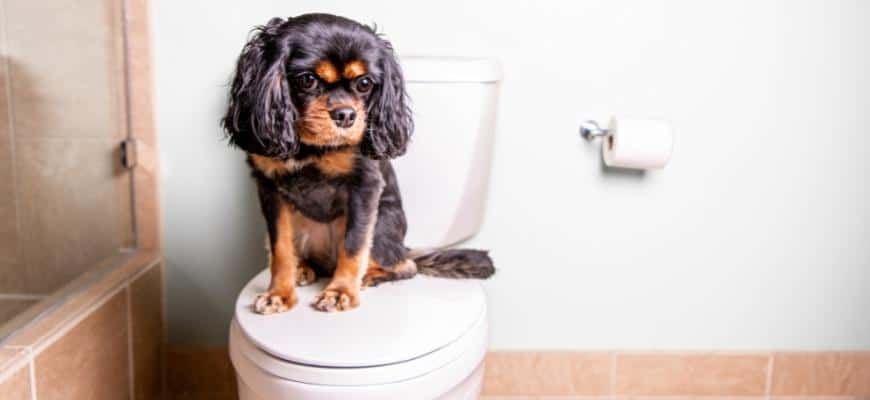
- To help facilitate the house training process, you can time your pup’s toilet breaks according to mealtimes. For younger puppies, make sure that bathroom time is 10-30 minutes after their big meal.
- For older dogs, you can wait for up to an hour to send them out.
- However, make sure that you don’t over-exercise your dog at this time. Simply take him to the potty spot & encourage him to relieve himself. This is because exercise right after a meal may cause gastric dilation-volvulus.
Leash your pup
- When you first introduce your puppy to the perfect spot for pooping, make sure you bring him to the spot on a leash.
- Using a leash means you can control your dog’s movement, & you won’t have to chase behind him if he runs away from the spot unescorted.
Don’t let him roam away from the area
- Let your pup sniff the area as you use positive affirmations such as cooing, “Good boy” or “Nice.” If your pup begins to edge away from the bathroom space, gently tug his leash & bring him back.
- Make it clear that he can not freely explore the rest of the yard or the house without using the potty spot first.
Use positive reinforcement
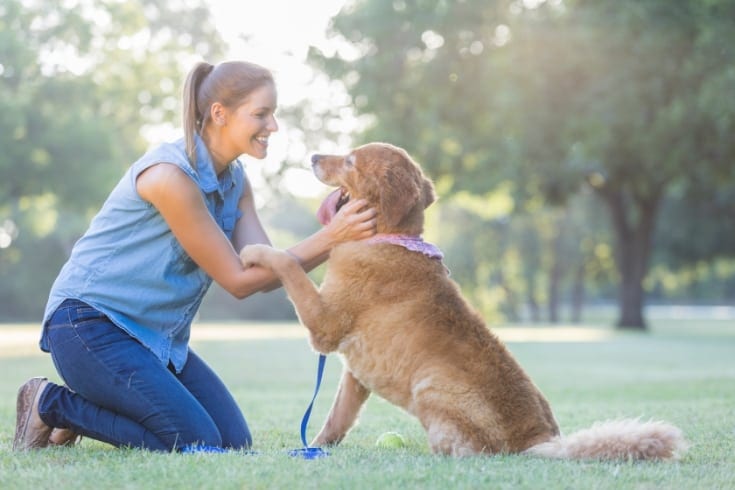
- Positive reinforcement is the key to successful potty training. If you notice your puppy relieving himself in the potty area, then you can use verbal cues for good behavior like “Yes” or “Good Boy.”
- You can also reward him with tasty puppy treats or tons of pats on the head.
- Over time, your dog will build a positive association with pooping in their toilet spot, which will make them want to do it more.
Redirect him if unsuccessful
- If your dog doesn’t manage to go to the bathroom when you lead him there, don’t worry! Simply bring him back after a minute or so and try to make him go again.
- Patience is key, so don’t expect your dog to use his toilet area correctly on the first try.
Watch for potty cues – don’t let him go out of the potty area
- To help build a verbal association, watch your pup like a hawk. Look out for any cues that he is going to go to the bathroom, such as circling, squatting, or staring. As soon as you see this behavior, say the potty cue, which could be “Make” or “Go Potty.”
- With time, your dog will start to understand that when you say this phrase, it means they have to relieve themselves,
- This is an invaluable tool for potty training. Once this cue is nicely established, you can say it whenever your dog nears the potty area, which can help build an association.
Conclusion
Potty training is a challenging process, & we need all the help we can get, especially with controlling our dog’s pooping. That’s why it can be super beneficial to choose the perfect spot, keep it clean, and focus on forming positive associations.
If all else fails, invest in a high-quality potty spray that uses pheromones to attract your dog. Keep your pup on a leash & keep bringing him back to the chosen area when he wanders.
If you have any questions or suggestions, please leave a comment down below. We hope you found this article informative!
Thanks for reading!

